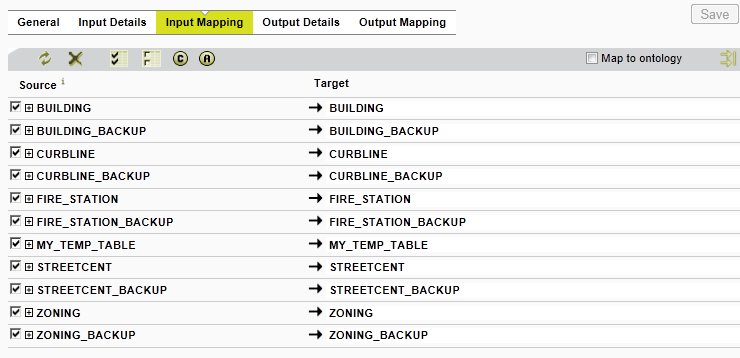Input Mapping
Source and target maps are defined in the Input Mapping. The map is organised into attributes within classes.
1Integrate supports complex attributes such as arrays, references, and composite strings.

Input Mapping
The Source column shows the tables and columns from the schema for the external data source.
The Target column maps tables and columns to classes and attributes in 1Integrate.
Creating Input Mappings
After setting up the input connection details (see Input Connection), map the schema in the 1Integrate cache by selecting existing classes and attributes from the external data source schema, and adding new classes and attributes where necessary.
You can override the name and type of each attribute. By default, 1Integrate is populated with the same names and data types as the external data source. 1Integrate also indexes geometry columns and the primary keys of the source data.
Only checked items will be analysed in 1Integrate.
Primary Geometry
1Integrate allows you to map multiple geometries for a feature by selecting Prm.
When you import the data into 1Integrate, you define the primary geometry. The primary geometry is the column on which the spatial index is created in the cache, and is always named geometry.
The primary geometry is reported in the rule conformance report (see Rule Conformance Results Report).
Index Flags
Each attribute has an index flag (denoted by a Idx checkbox).
The Index flag determines whether or not the attribute is indexed by 1Integrate.
For optimum performance, index any attributes for which you want to define rules that will search for objects with a specific value for that attribute. It is recommended that you do not create an index for attributes that will not be queried within a rule or action.
By default, an index is created within 1Integrate if one already exists in the external data source.
Report Flags
Each attribute has a report flag (denoted by a Report checkbox).
The Report flag determines whether or not an attribute is reported in the rule conformance results XML and HTML reports (see Rule Conformance Results Report).

